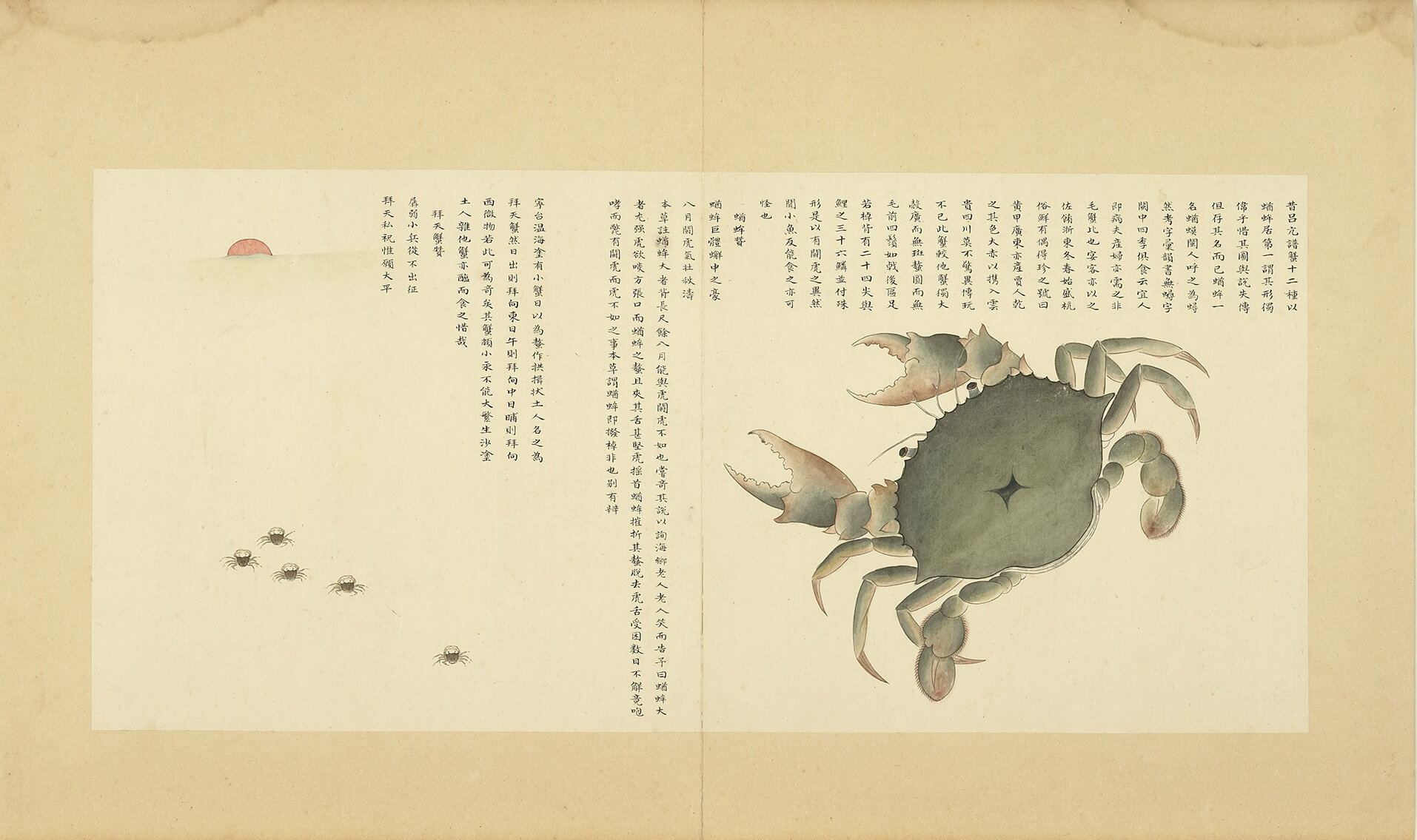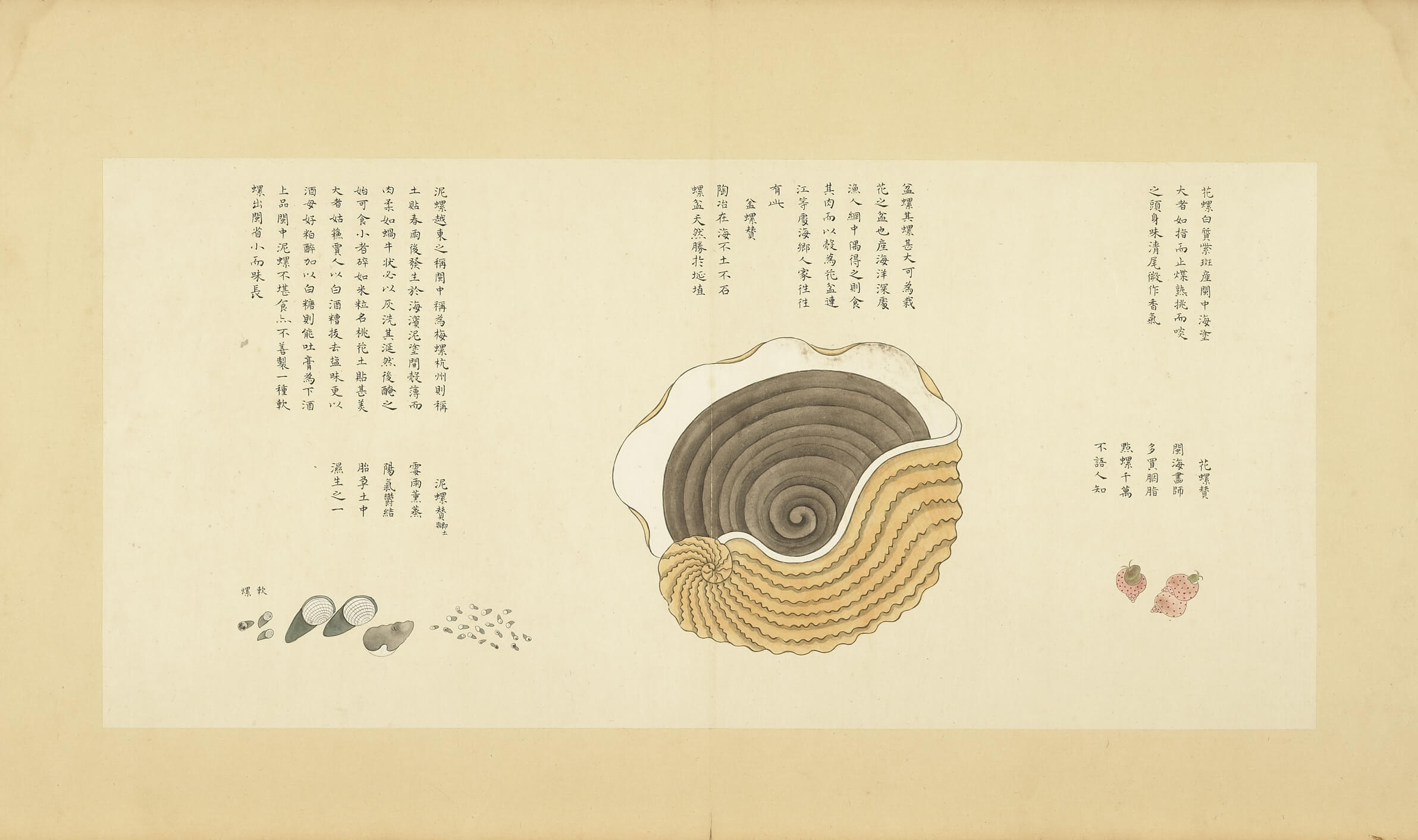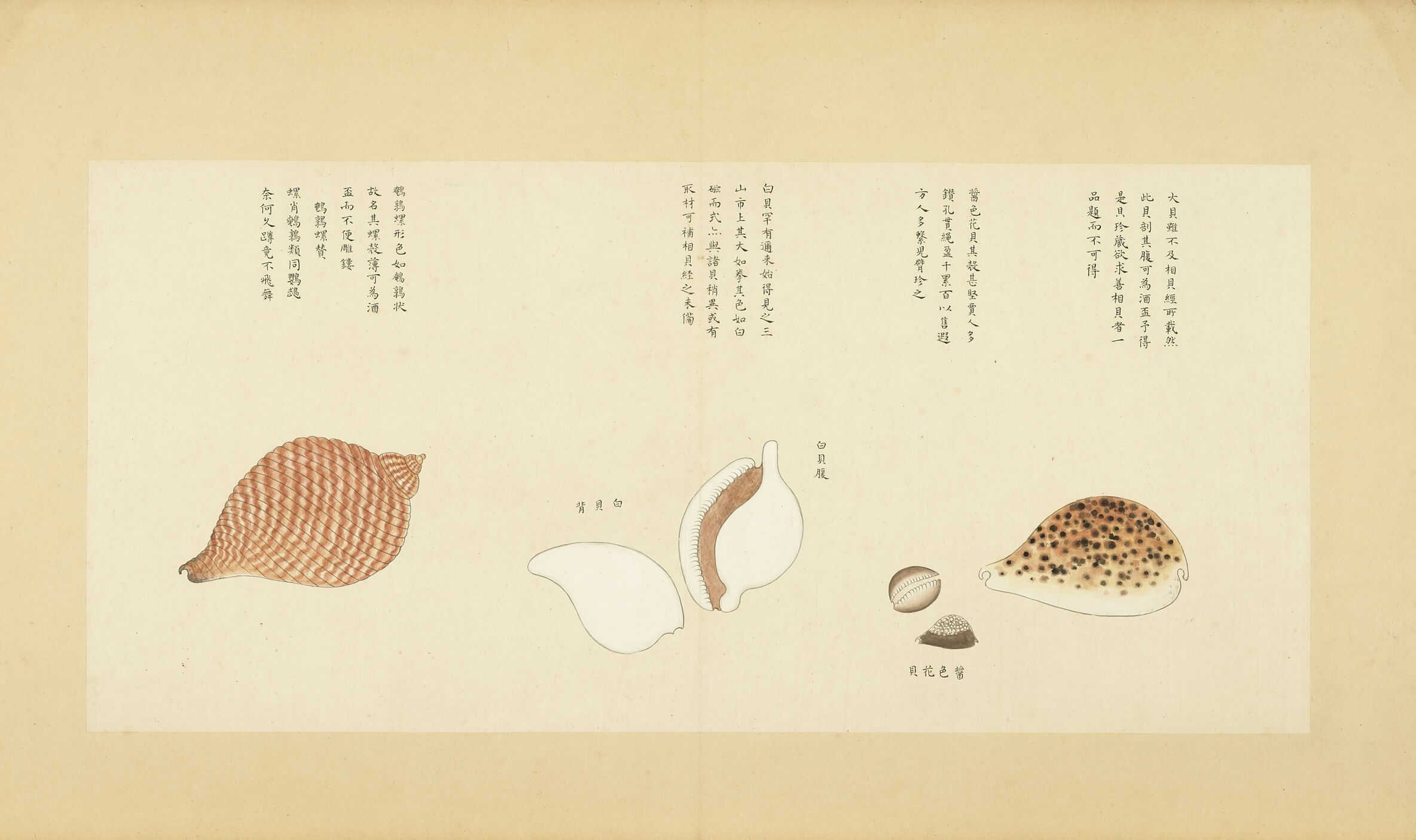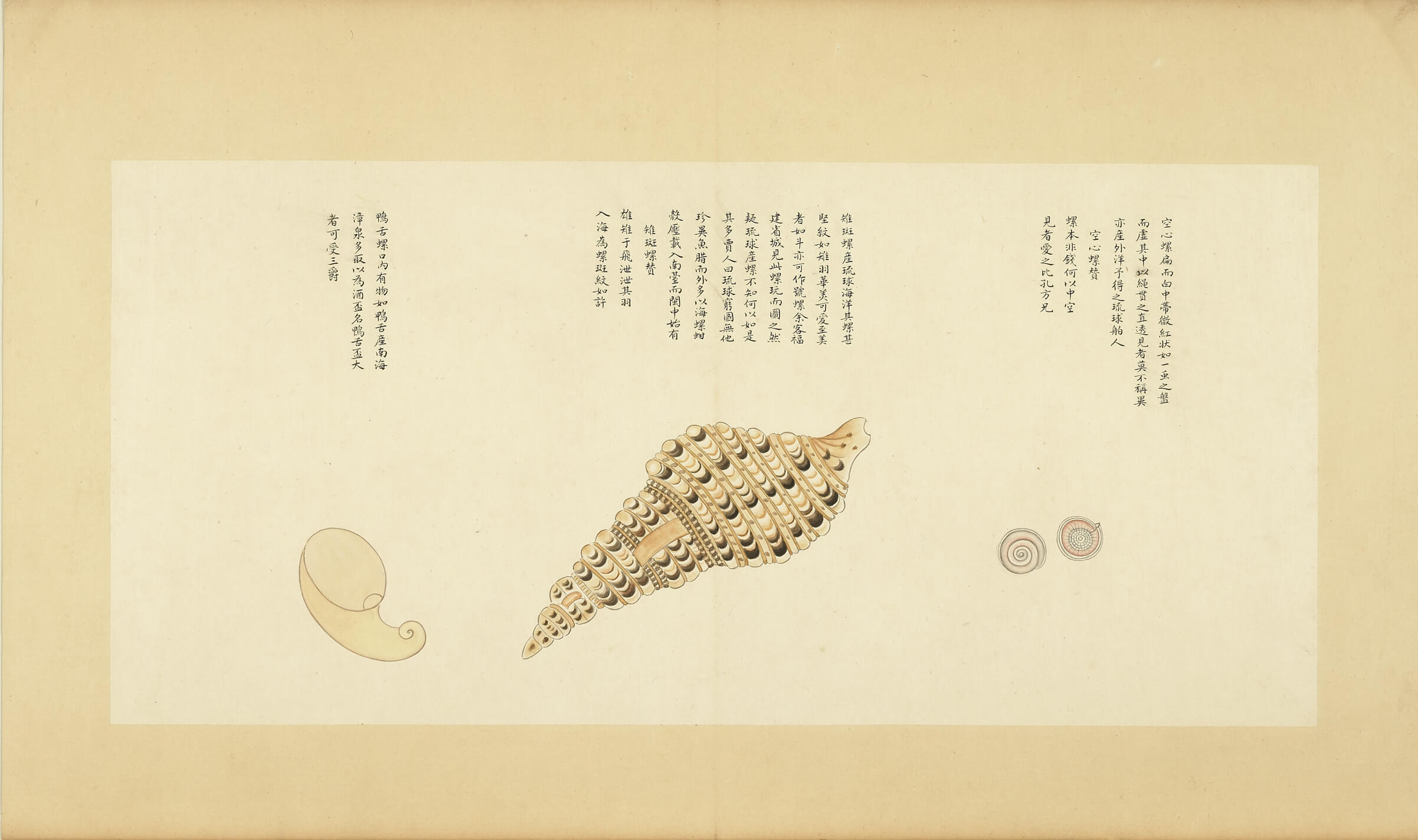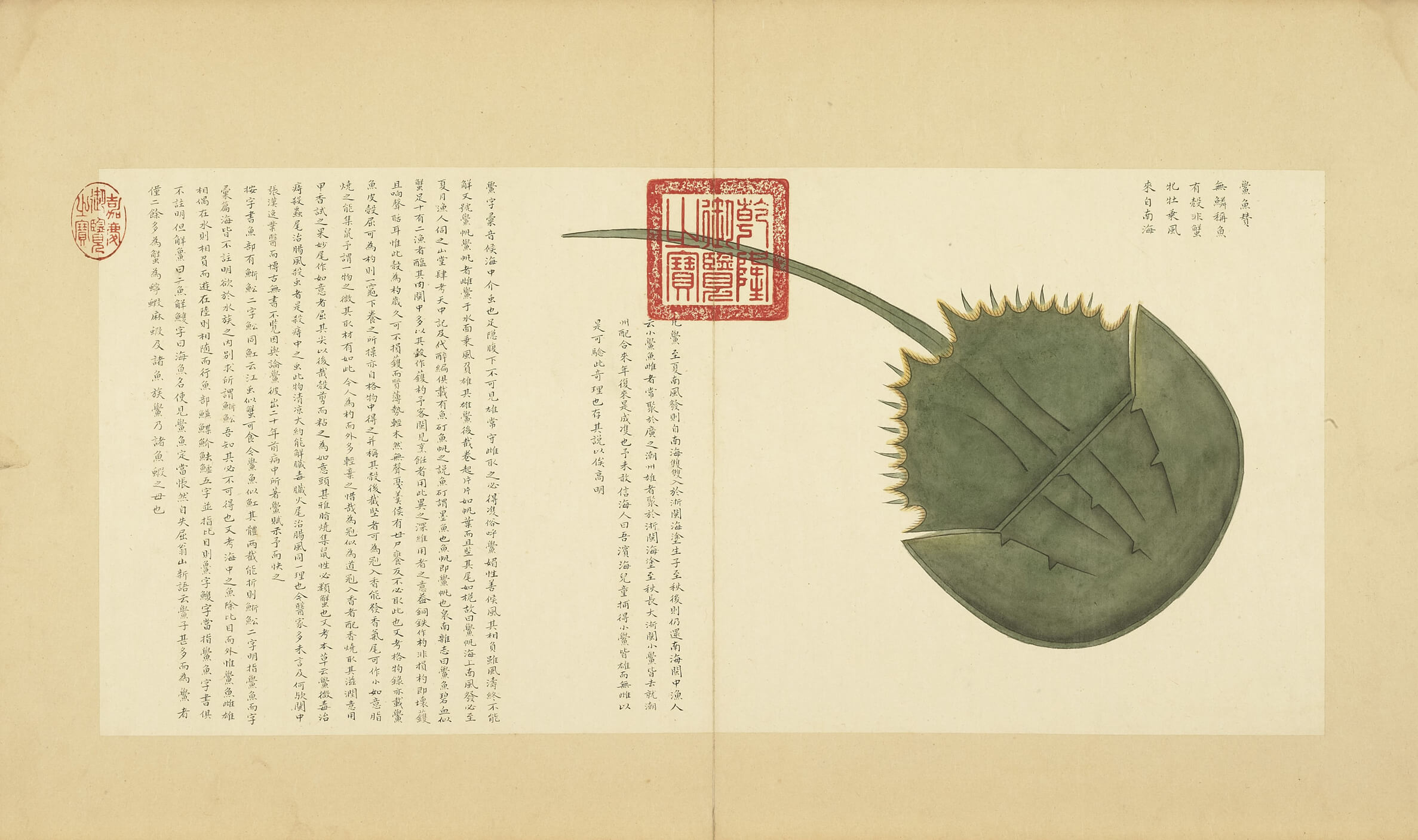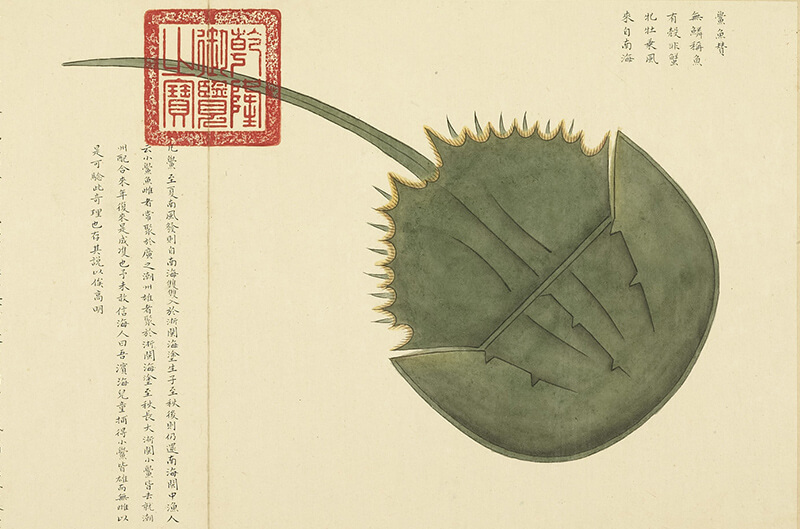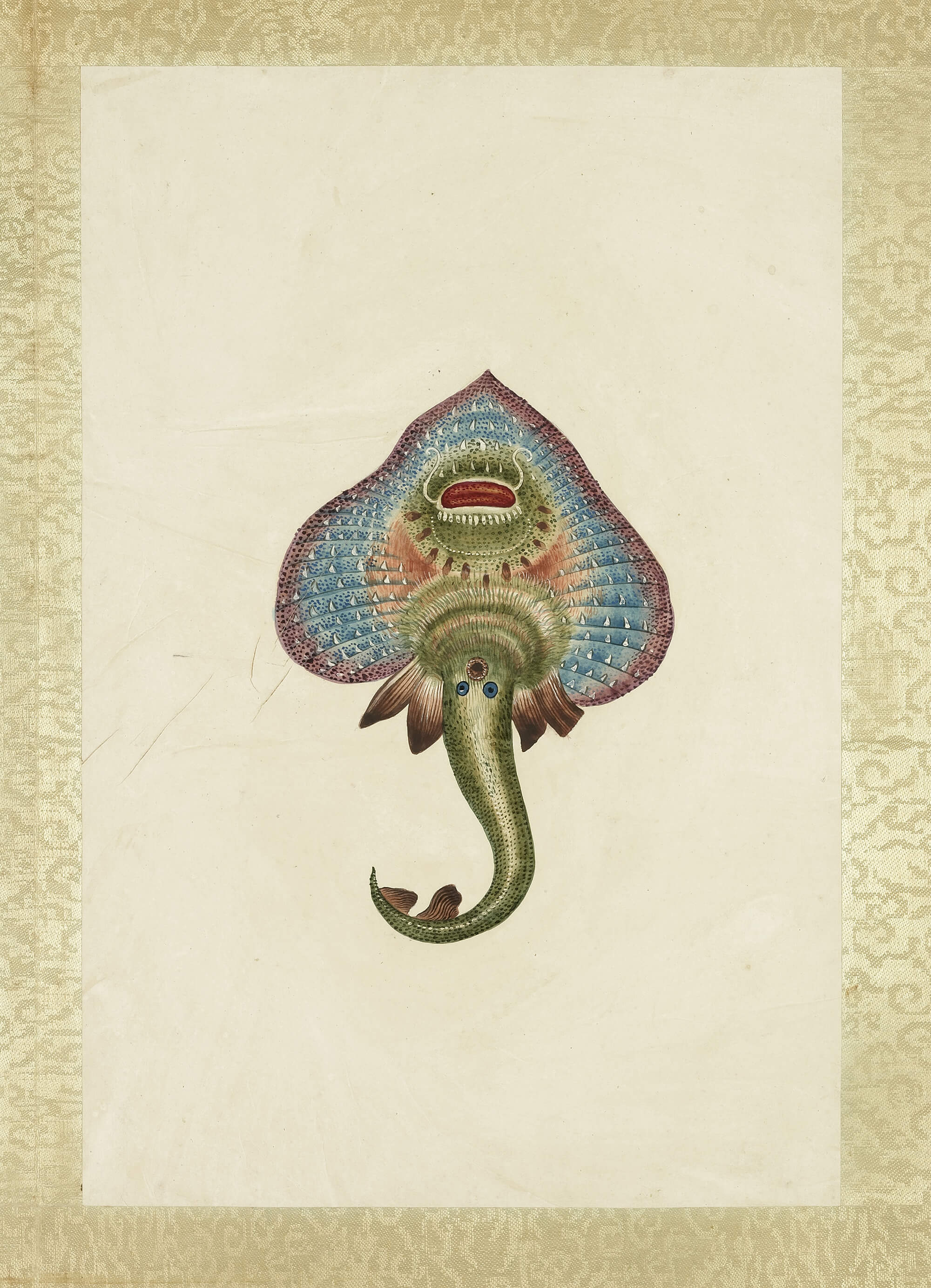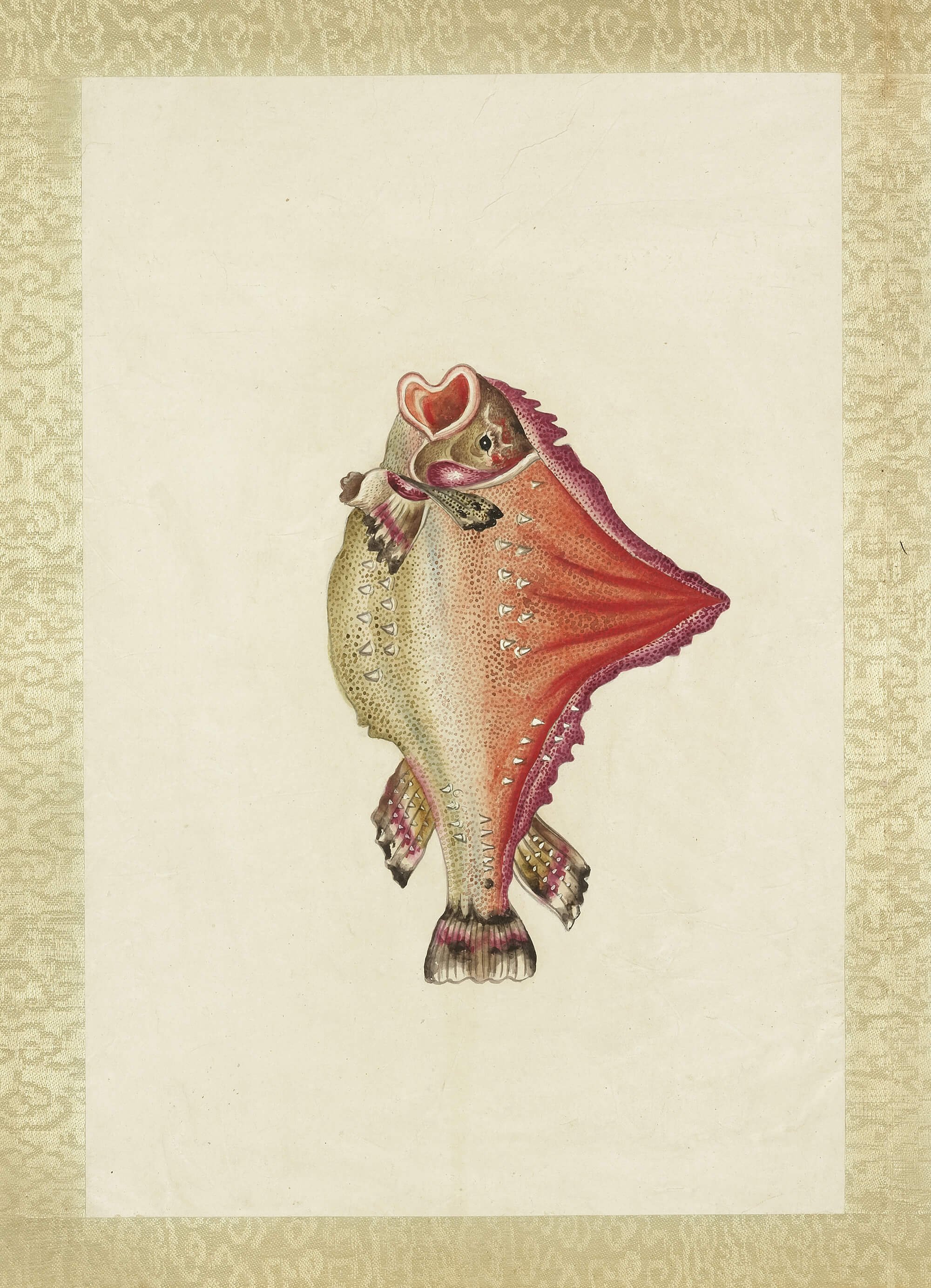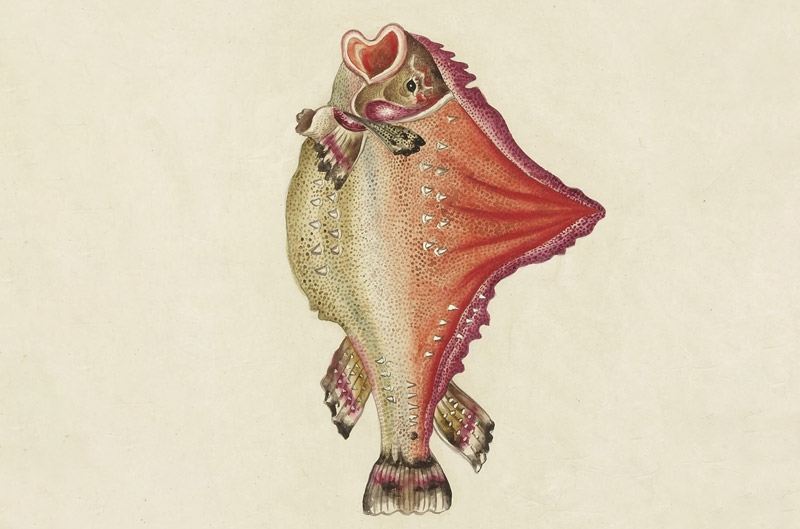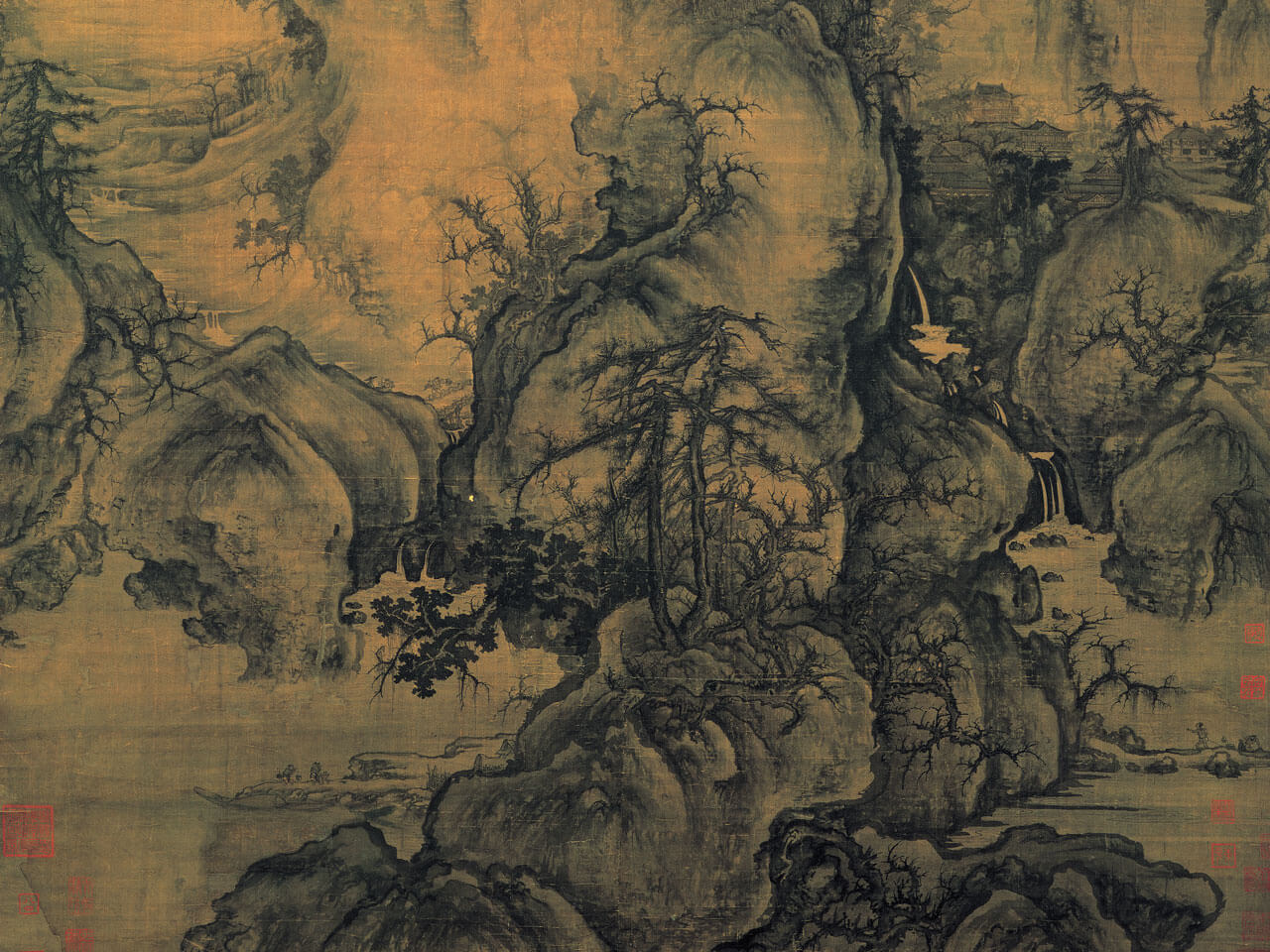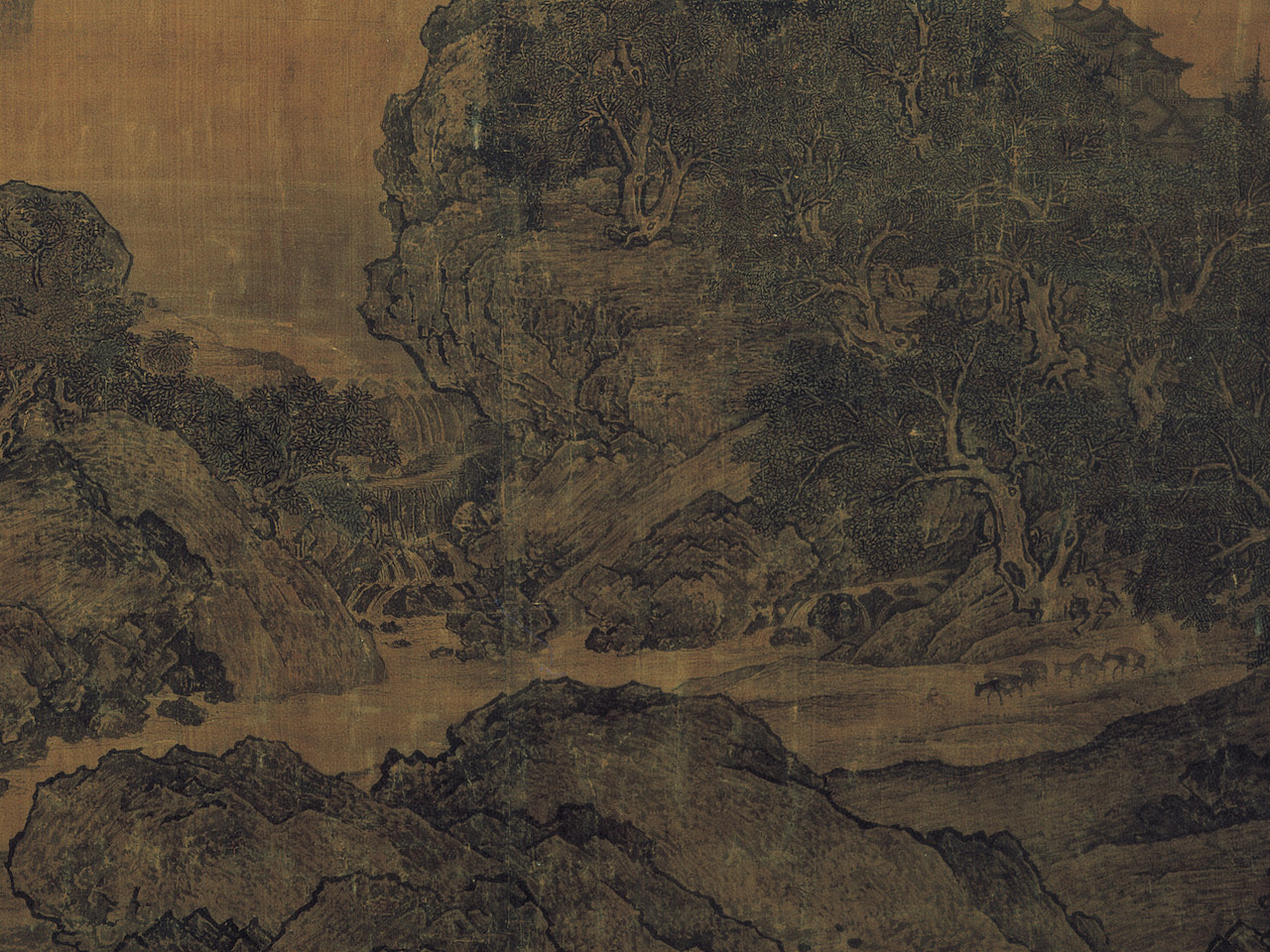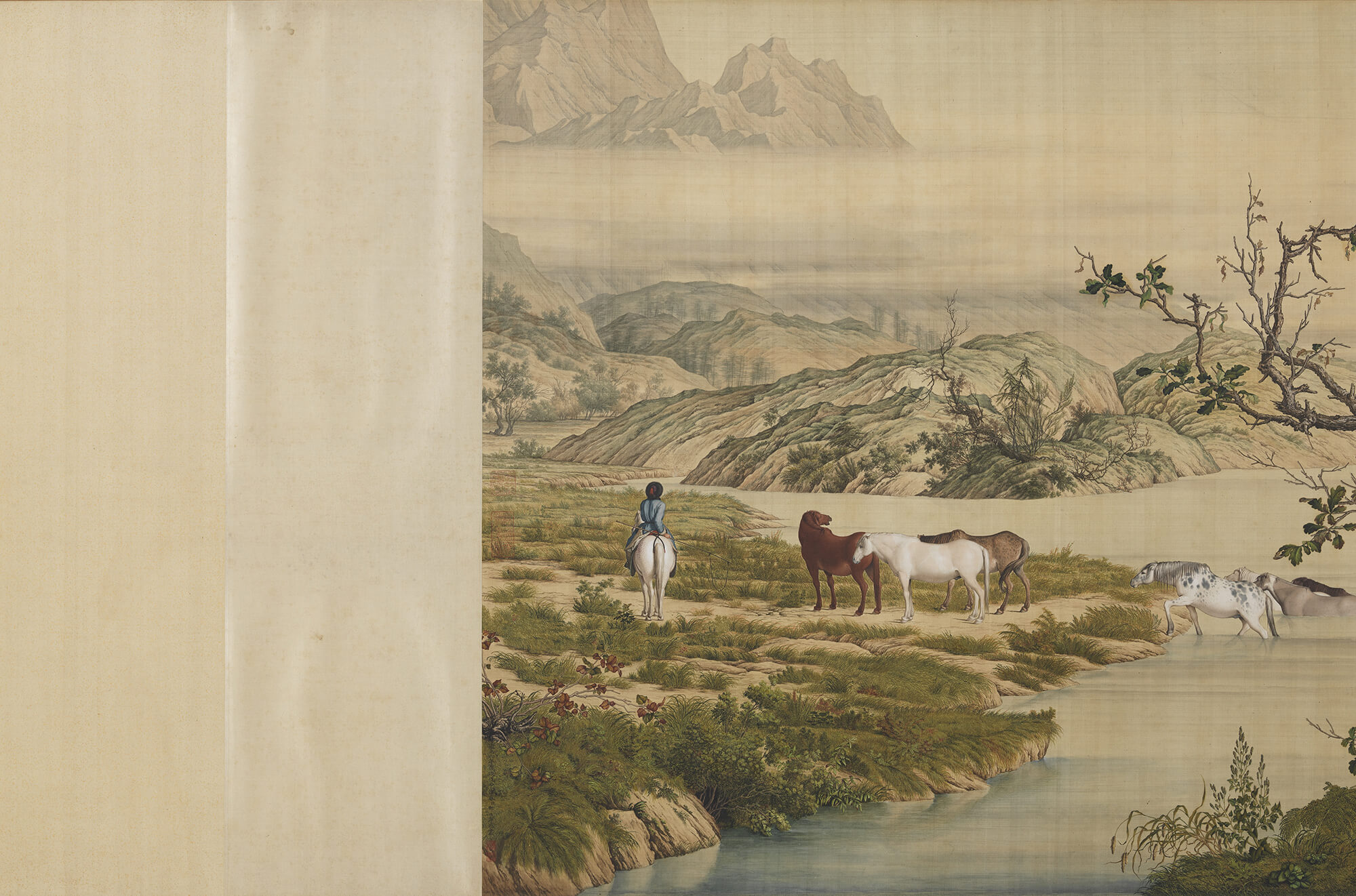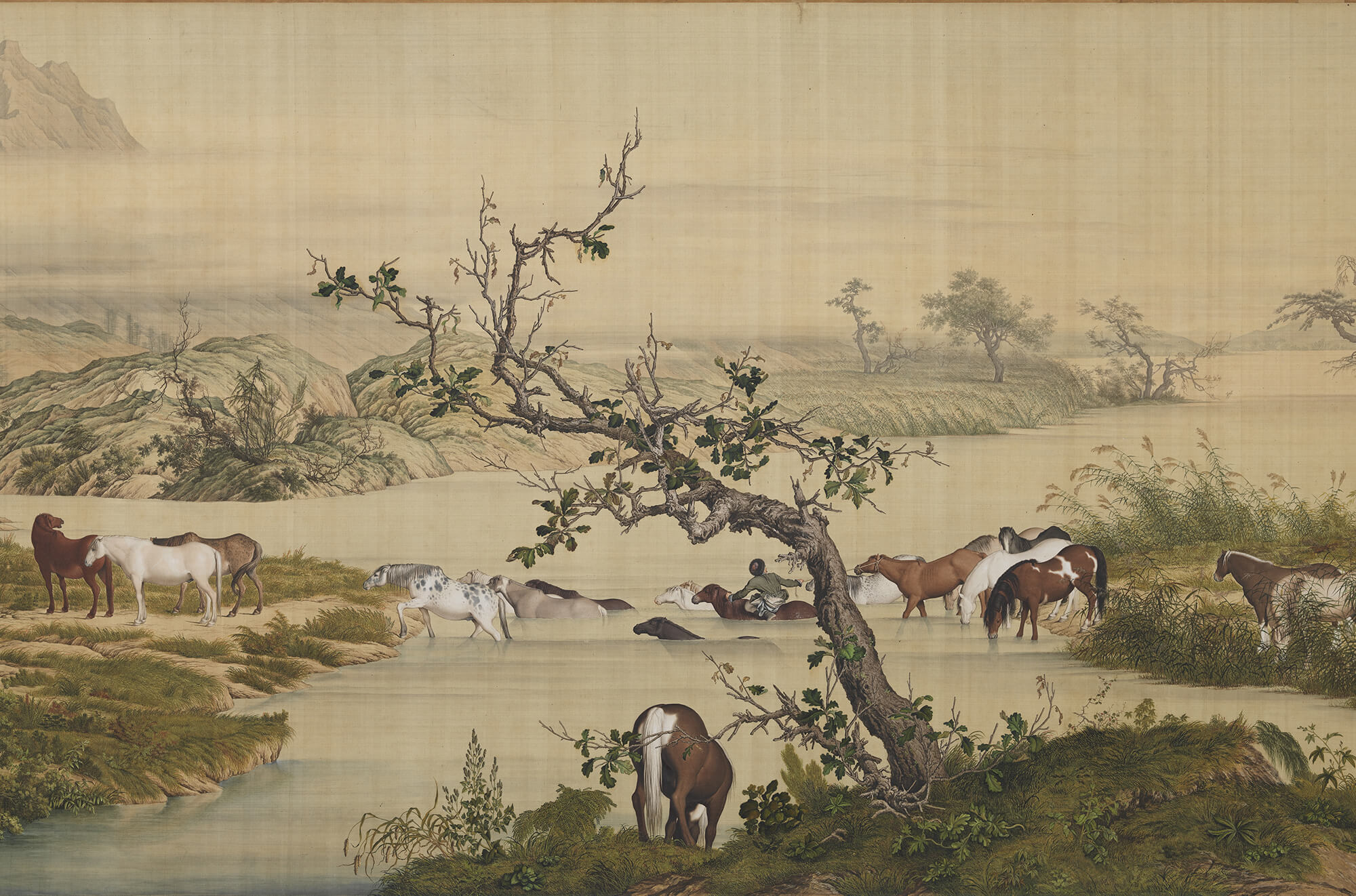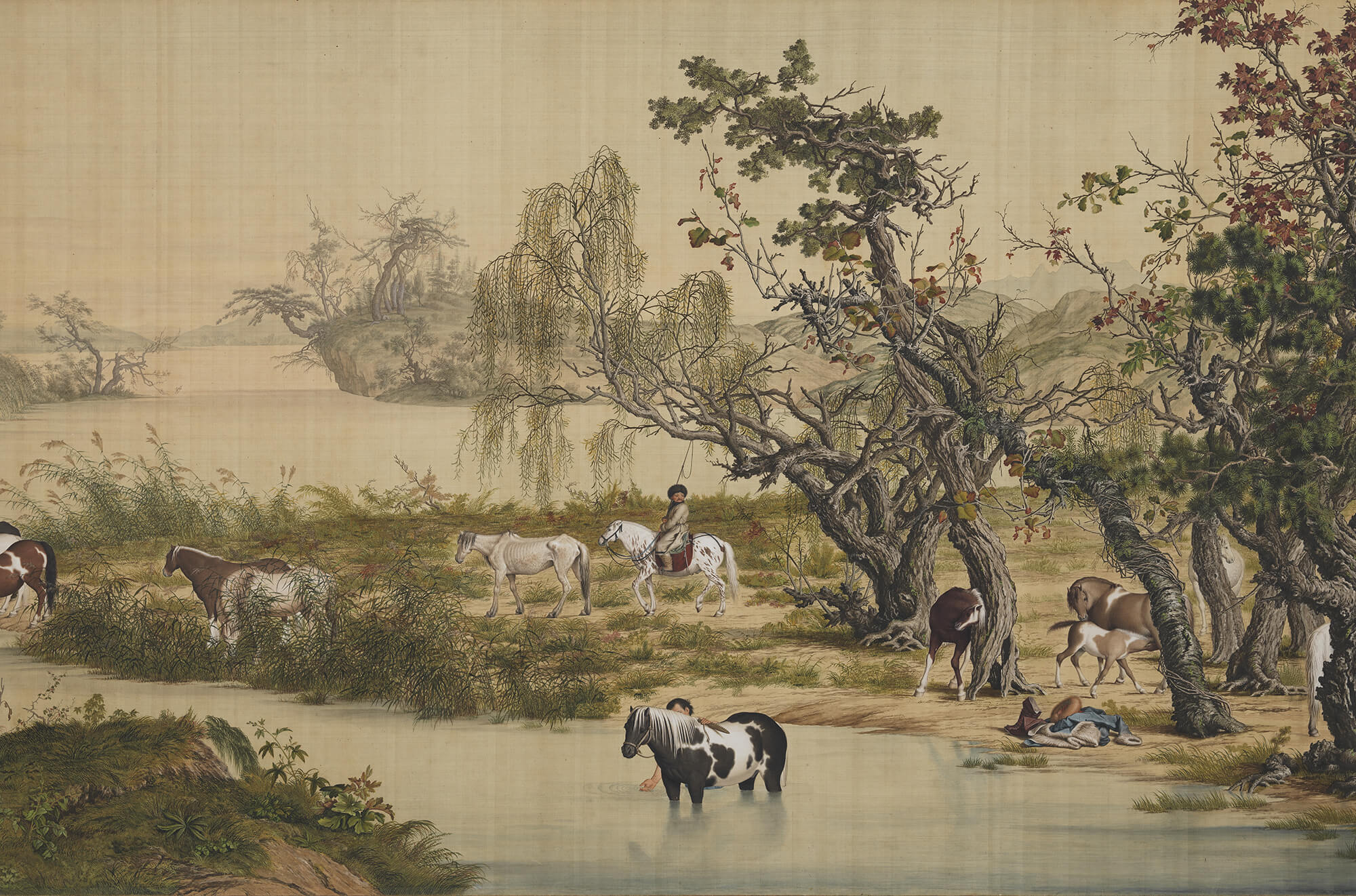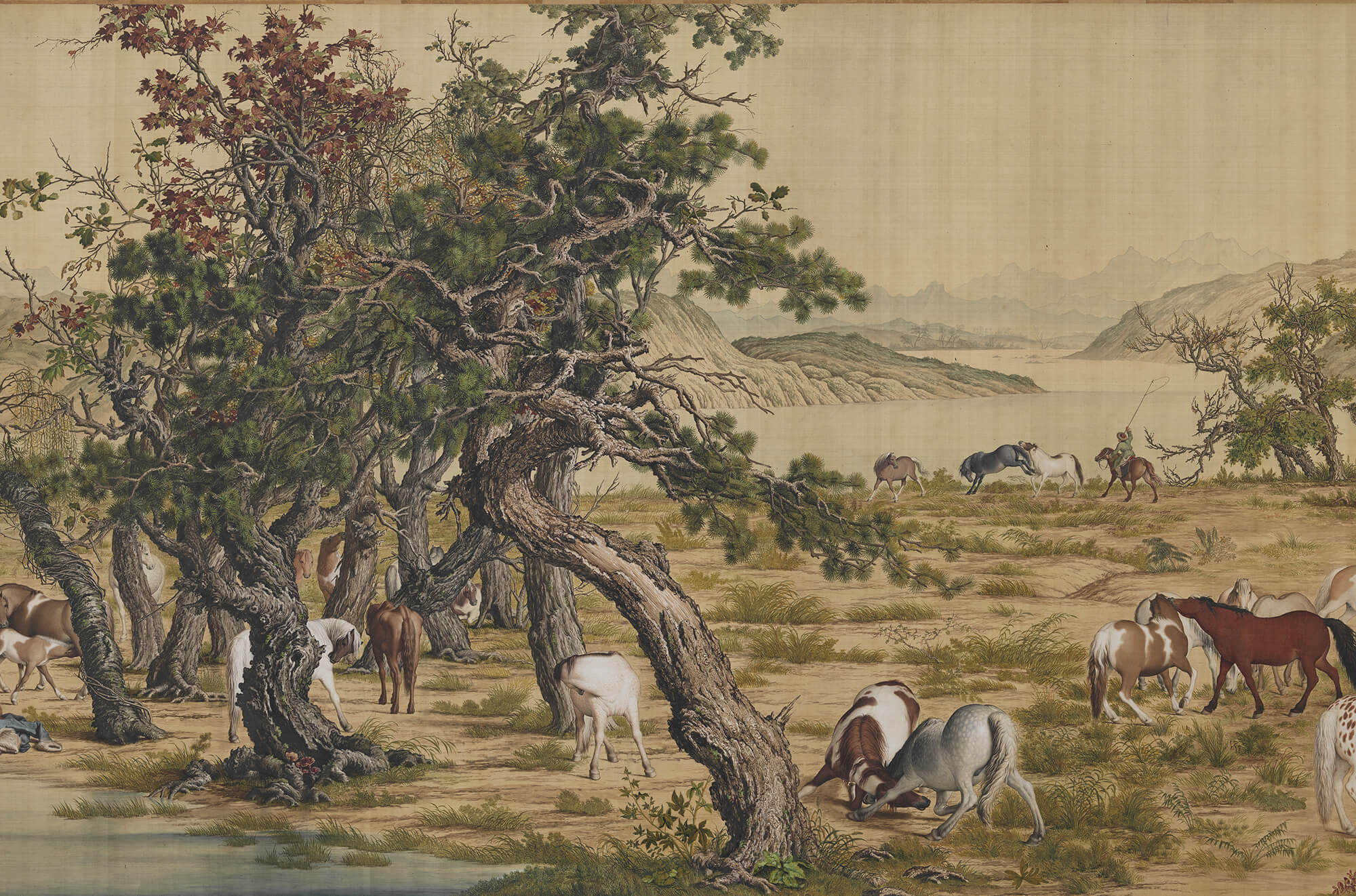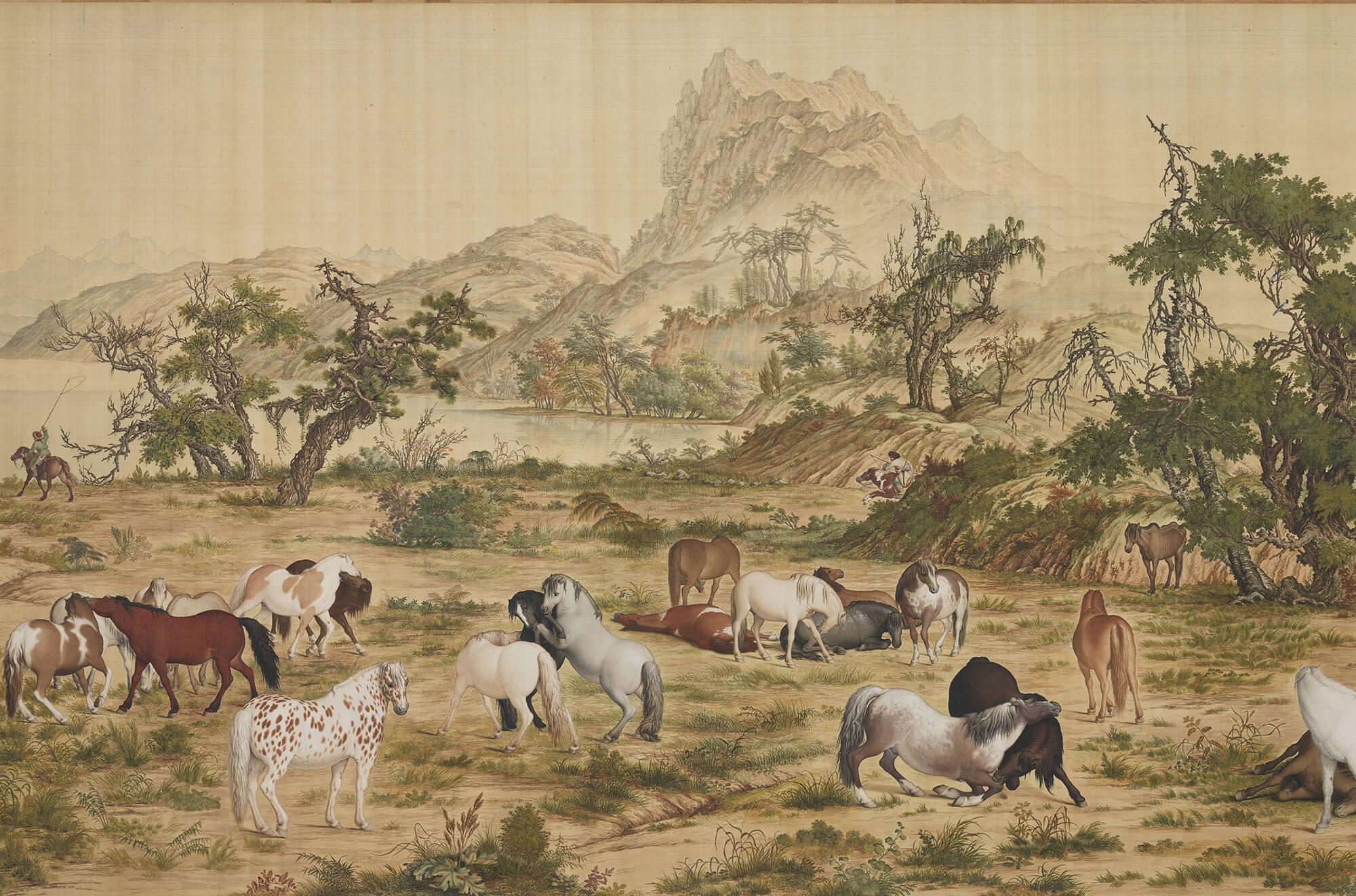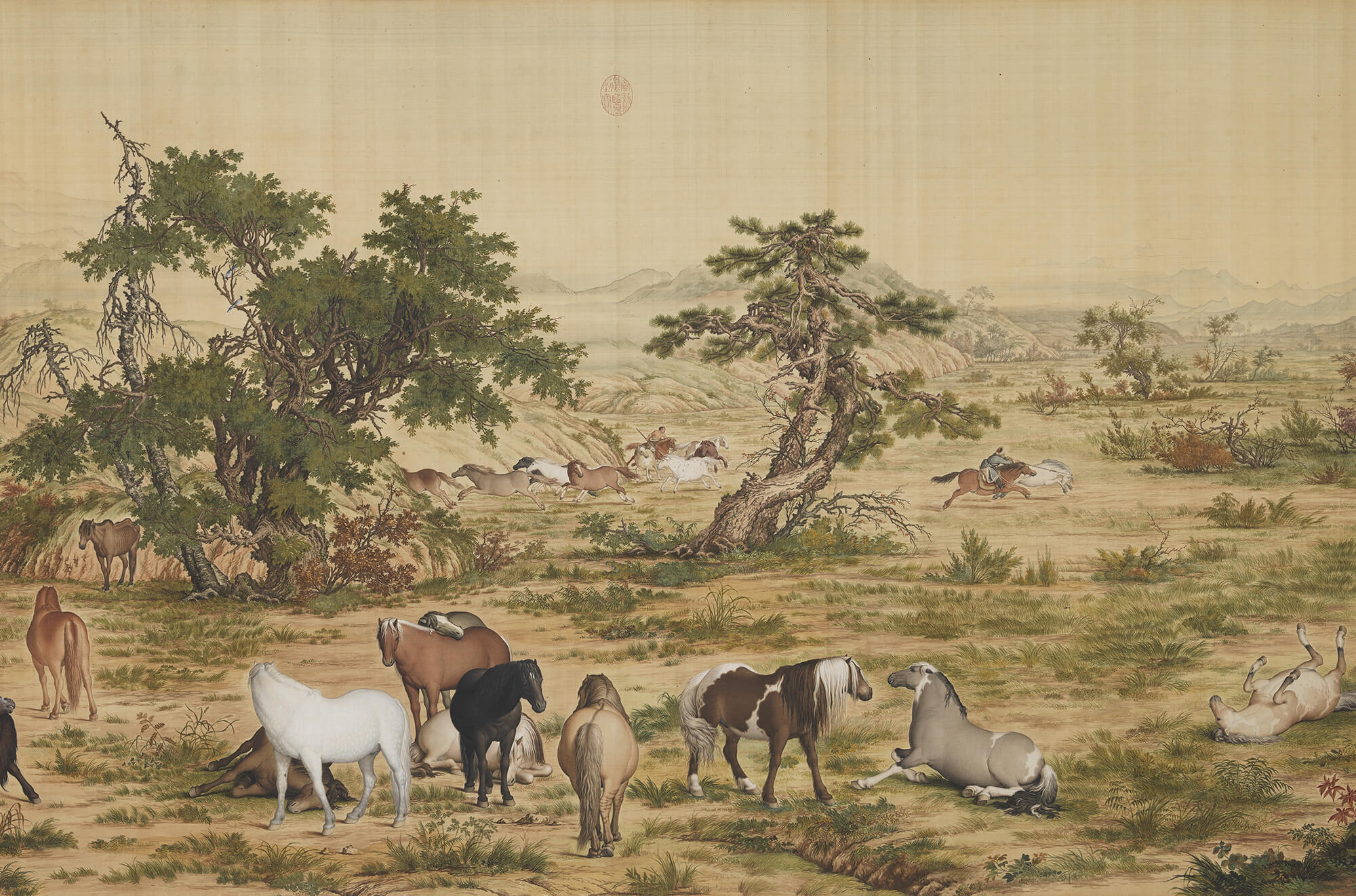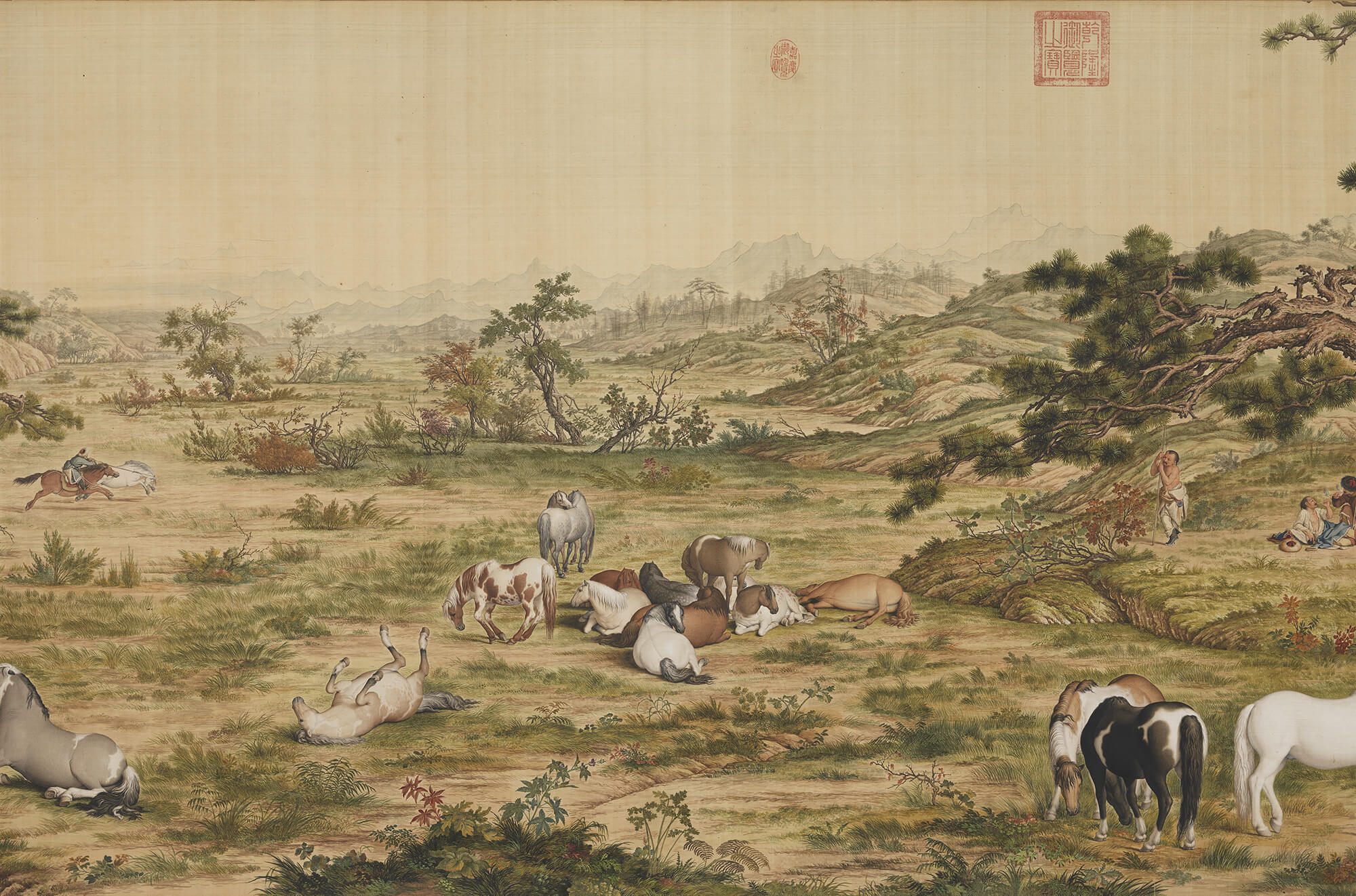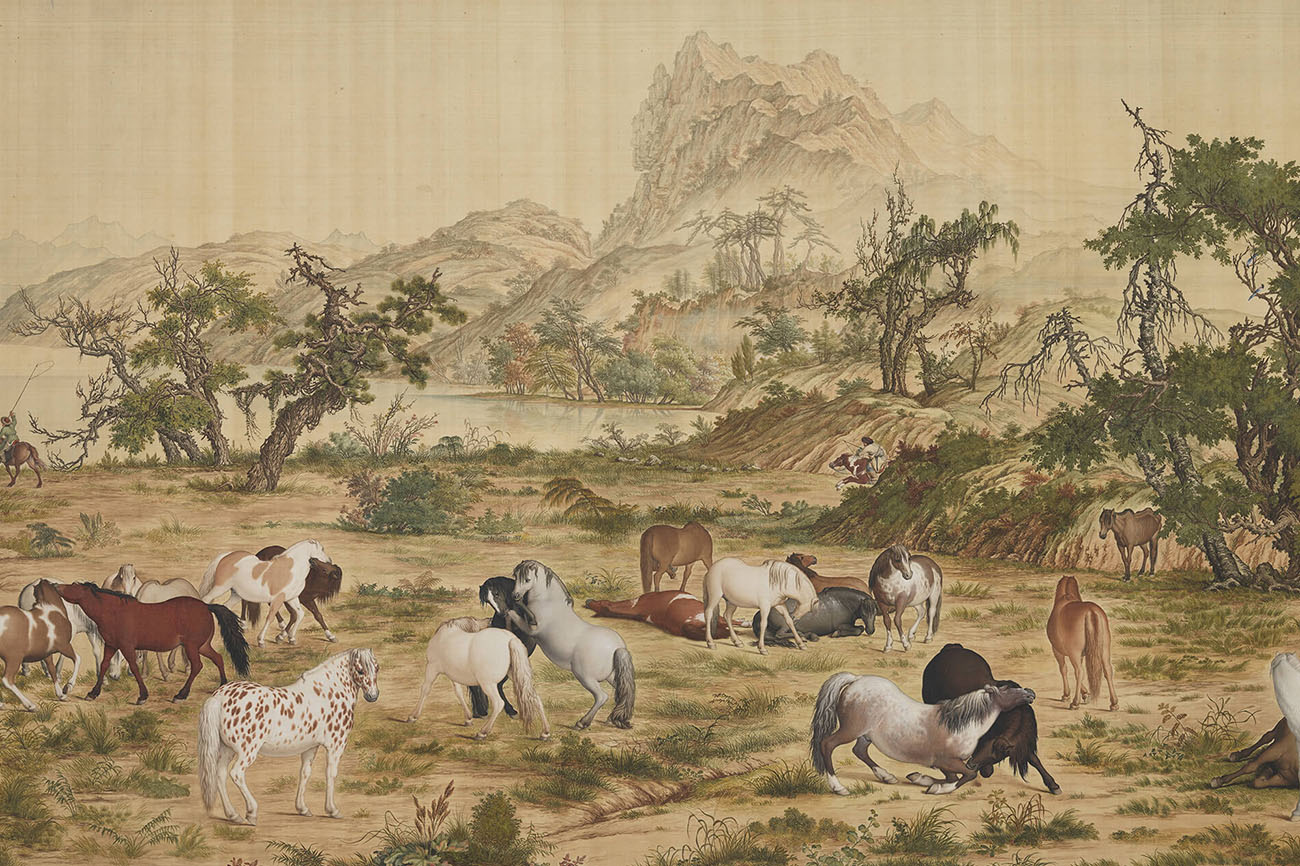About Exhibits
What is the Sea Miscellany? It refers to the marvelous diversity of aquatic species.
Common themes in ancient paintings are portraits, landscapes, and bird & flowers (bird-and-flower paintings generally encapsulate beasts, insects, and fishes (including aquatic species)). Such themes have been passed down and revolutionized throughout the course of history. The term Sea Miscellany is derived from the Book of Shang: Tribute of Yu that describes the innumerable abundance of seafood in ancient Qingzhou (Shandong in the modern era). The Illustrated Album of Sea Miscellany showcases the diversity of ancient aquatic species and is the product of wonderful explorations and research by the artist.

Marvels within the Sea Immersive Interactive Tunnel
This immersive underwater tunnel features fascinating sea creatures from Illustrated Album of Sea Miscellany, Illustrated Album of Sea Oddities, and reveals how people observed and imagined marine life in the Qing dynasty. Upon entering the interactive tunnel, visitors will be able to explore the depths of the ocean and wander through this boundless underwater world.
Album of Sea Miscellany
- Nie Huang, Qing Dynasty
- Album leaf, ink, and color on paper
The fourth volume from the Album of Sea Miscellany illustrated by Nie Huang during the Qing dynasty. The content features aquatic life such as the horseshoe crab, seashells, clams, crabs, and shrimp. Nie Huang lived during the Kangxi period (1662 ~ 1722) and was a native of Qiantang (now Hangzhou, Zhejiang Province). He traveled extensively in the north and south before settling in Fujian and referring to himself as a "Guest of Min." He once painted 30 species of crabs (1867) for the "Album of Crabs", before using it as a reference along with his past knowledge, observations, and research to illustrate the Album of Sea Miscellany.
Sea Oddities
- Qing dynasty (1644-1911)
- Album leaf
The artist(s) of this work is unknown. There are no inscriptions or other textual written on it. Only a record seal of the reign of the Hsuan-tung Emperor (1908-1911) appears. Composed altogether of 16 leaves, a rainbow of colors was used to paint various kinds of unusual and exotic sea life. Some of them appear to be based on actual species found in nature, while others look as if they are imaginative constructions that require further research. The wooden cover of the album is engraved with the characters for the "wu-chen" cyclical year. Recurring every 60 years, the possible years include 1748, 1808, and 1868. Further research, however, is required to date this work more precisely.
Composition is any intentional placement of objects in the painting that was done to ensure harmony with other elements and to define the subject and its background. Xie He of the Northern and Southern Dynasty mentioned "division and planning or placing and arrangement" in his book The Record of the Classification of Old Painters and thereby establishes composition as one of the critical principles of painting. A strong composition can help evoke the theme and the artist's creative mindset, uplifting the visual aesthetics of the artwork.

Into the Painting (Early Spring)
- Body Tracking Interactive Installation
"Into the Painting" is a multisensory interactive experience based on Early Spring, a masterpiece of painting housed in the National Palace Museum. Through multisensory interactive technology, audiences are invited to walk into the vast landscape and view its characters, magnificent mountains, gurgling streams and tranquil pavilions by following the meandering path laid out by the painter's brush. Viewers overlook the majestic scenery and revel in the splendor of the Chinese landscape painting like a bird hovering in the sky.

Into the Painting (Travelers Among Mountains and Streams)
- Body Tracking Interactive Installation
Inspired by the classic painting Travelers Among Mountains and Streams in the NPM collection, this installation uses body-tracking interactive technology to immerse the viewer in the details of a giant landscape painting so they can experience the grandeur of the mountain.
Early Spring
- Guo Xi (active in 11th century), Song dynasty
- Hanging scroll
Created in 1072, Early Spring is not only the finest representative work of the master Guo Xi, but also one of the most important surviving milestones in the history of Chinese landscape painting. The composition is arranged in a symmetrical manner, but the sense of order still reveals variations full of rhythm and movement. In addition, the effect of light and dark achieved through the use of graded washes of ink also adds considerably to the illusory effect of space in this landscape. The inclusion of activities such as boating, gathering firewood, and traveling further transforms the painting into a mystical realm full of life, wherein the viewer can travel and exist.
Travelers Among Mountains and Streams
- Fan Kuan, Song Dynasty
- Scroll, color lacquer on silk
A dense forest grows like a mushroom on the top of a tall mountain, flanked by a retinue of other mountains. A small tower can be glimpsed through the trees and a small group of pack animals are hurrying between the hills and rocks. A waterfall as fine as a string pours down, with the sounds of the stream echoing in the valley. Everything in the painting feels so grand and realistic. All the mountains are composed of ink dots as thick as rain and the rocks with saw-toothed wrinkles. These fill the mountain stone with time-worn strength. The artist's signature "Fan Kuan" is placed in the right corner of the painting in the shade of a tree.
Style is said to be the painter's creative traits. The era and region that the painter grew from will inevitably impact his/her creative style. The foundation of this section is Dwelling in the Fuchun Mountains by Huang Gongwang. With convolutional neural networks and deep learning, the section explores how Monet, Cézanne, and Van Gogh would each portray the Fuchun river. Visitors are guided through a journey of similarities and differences between Chinese and western landscape paintings by comparing and merging the colors, strokes, shadows, and details employed by the four artists.
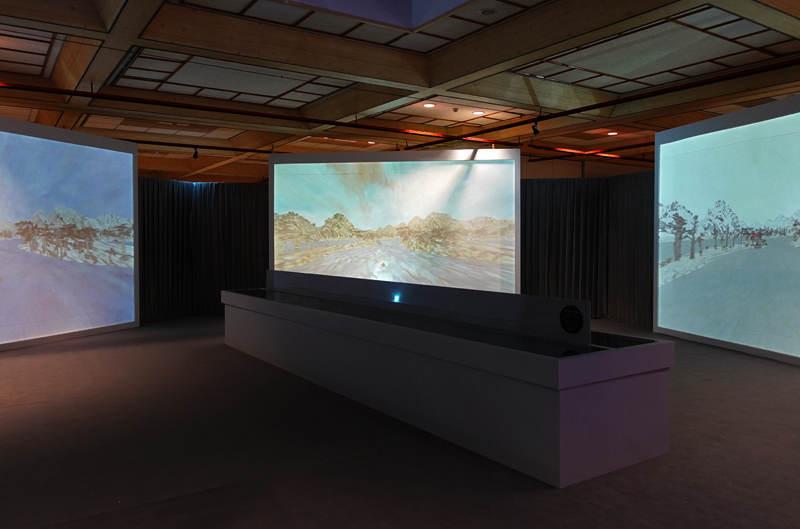
Impressions of Fu-Chun
- Immersive Theater
Is "style of AI-created painting" the same as "a painter's style?" Can "style" be influenced by the interpreter or the interpreting tool? Is the Impressions of Fu-Chun a mathematical representation generated by an algorithm, or a creation with a soul formed by the dance between humans and AI?
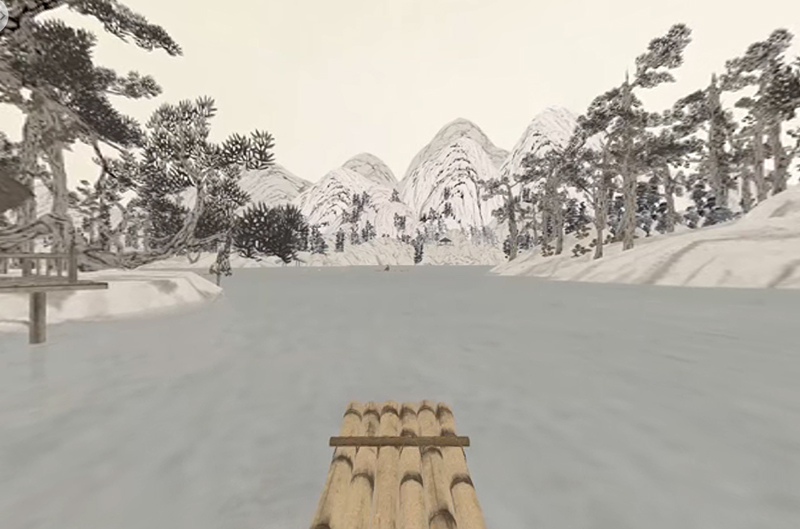
Traveling around Fu-Chun River
- Virtual Reality
The painting Dwelling in the Fuchun Mountains by Huang Gongwang, the first among the four grandmasters of the Yuan dynasty, served as the inspiration for "Traveling around Fu-chun River." VR technology is used to venture into the idealized landscape created by the painter's brush. Players cruise along the Fu-chun River, admire the jagged mountains, verdant forests, and riverside houses in a modern version of the landscape painting.
Dwelling in the Fuchun Mountains (Wu-yung Version)
- Huang Kung-wang (1269-1354), Yuan dynasty (1279-1368)
- Handscroll, ink on paper
"The Master Wuyung Scroll" version of Dwelling in the Fuchun Mountains is composed of six joined pieces of paper and measures more than six meters in length. The first section of paper has traces of damage where repairs were done. Suffering from fire in 1650, the first part of the scroll was cut off (and now is in the Zhejiang Provincial Museum collection). The painting features layers of brush and ink, the landscape forms outlined and washed with great variation. The mountain shapes throughout the scroll range from rounded ones up close in layers stacked to the back to gently rolling slopes and banks, and even lofty peaks, revealing a rich variety to the landscape pattern. This handscroll painting not only represents scenery of reclusion in Fuchun, it even more so reflects Huang Gongwang's idealized image of the landscape transformed through his exploration of nature.
Dwelling in the Fuchun Mountains (Ziming Scroll)
- Huang Kung-wang (1269-1354), Yuan dynasty (1279-1368)
- Handscroll, ink on paper
The compositional scenery of this handscroll is generally the same as in ''The Wuyung Scroll,'' and the front part preserves the first section of ''The Remaining Mountain.'' However, the end lacks the section with the main mountain. Inscribed and dated to the autumn of 1338, it is said to have been painted as a parting gift for the recluse Ziming upon his return to Hangzhou. This is why it is generally abbreviated as ''The Ziming Scroll.'' In 1745, during the Qing dynasty, this handscroll entered the collection of the Qianlong Emperor. In the following year ''The Wuyong Scroll'' was also purchased, after which the ''The Ziming Scroll'' was considered to be the original and ''The Wuyung Scroll'' as a copy, thereupon inspiring much heated debate among later generations. Following the research of modern scholars, including comparison of the quality of brush and ink in the two versions, it was confirmed that ''The Ziming Scroll'' is actually a copy. However, this scroll still preserves the section of ''The Remaining Mountain,'' making it an important reference for illuminating the original appearance of Dwelling in the Fuchun Mountains.
The existence and thereby absence of color in ancient paintings can largely be categorized into two styles: Blue-green Shan Shui and Ink Wash. Blue-green Shan Shui paintings generally use plant or mineral dyes as seen in One Hundred Horses by Giuseppe Castiglione and is largely marked by vibrant colors and a blend of traditional techniques with western perspective techniques. Ink Wash paintings are created primarily with ink; the different ink concentration and layered strokes would combine to reveal the painter's subject. Such techniques can be found in Dwelling in the Fuchun Mountains by Huang Gongwang.
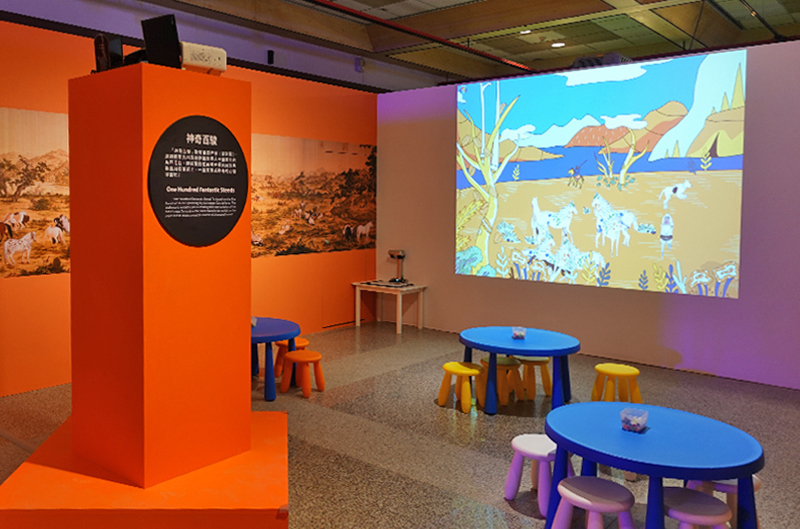
One Hundred Fantastic Steeds
"One Hundred Fantastic Steeds" is based on the One Hundred Horses painting by Guiseppe Castiglione. The audience is invited to join in creating their own variation of the horse's coat. Try to draw the colors found in the exhibit on the paper and co-create a magical universe of a hundred horses!
Galaxy Adventure of the NPM Guardians
His animation film inherits National Palace Museum's long tradition of anthropomorphizing collection artifacts into animated characters, which transmit knowledge about the museum's special artifacts to help audiences gain a deeper knowledge of their cultural heritage. The story, roughly based on Journey to the West, tells how the Guardian of the NPM—Kui Hsing, works to ensure a once-in-a-millenium astronomical alignment, which will bring peace and prosperity to the land. With this film, the National Palace Museum hopes to popularize a new generation of artifact stars to the museum's younger audiences.
One Hundred Horses
- Giuseppe Castiglione, Qing Dynasty
- Scroll, colors on silk
One Hundred Horses, painted by the Qing Dynasty's imperial court painter, Giuseppe Castiglione (1688 – 1766), depicts a plain with a hundred horses at leisure in various poses. Every detail in the painting such as trees, rocks, mountains, rivers and figures are all realistically done. The beautiful coloring, intricate composition, and compelling realism reveal a fusion of Eastern and Western techniques. Traditional Chinese techniques were combined with Western shading and perspective as well as Western painting materials, showing a true meeting of East and West. This work is representative of Giuseppe Castiglione's early style.
